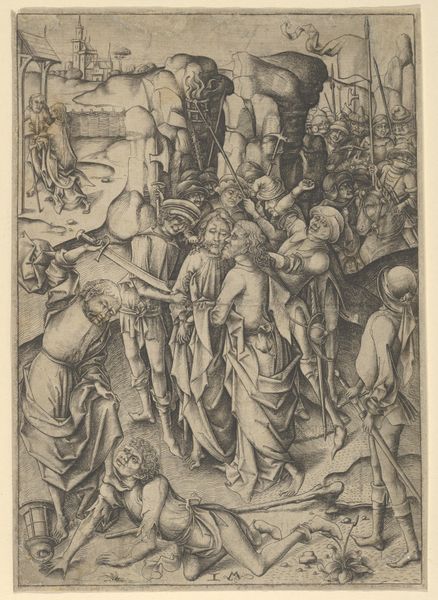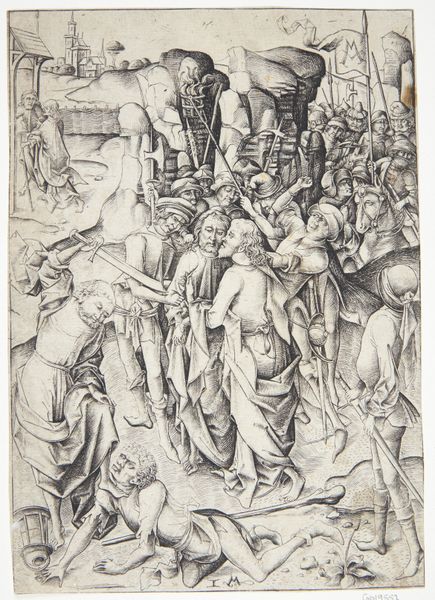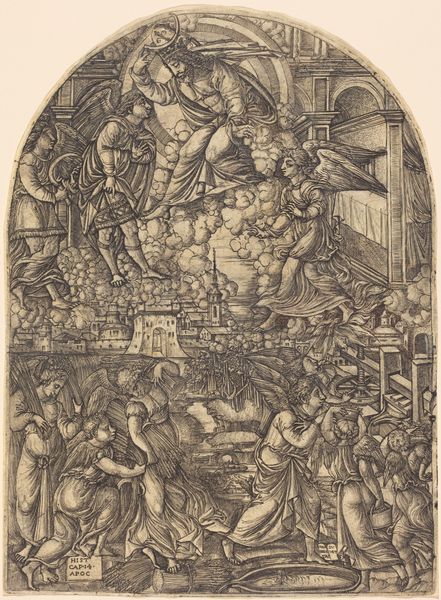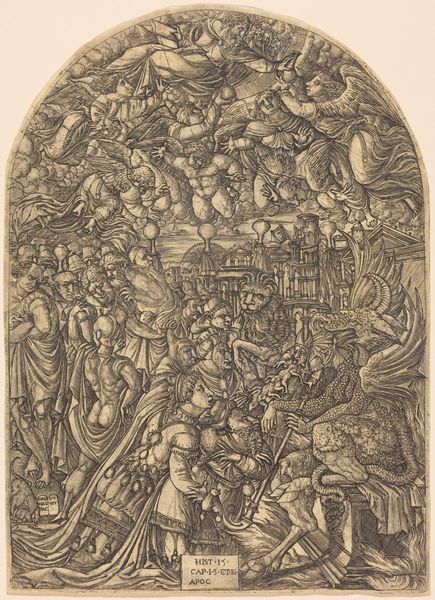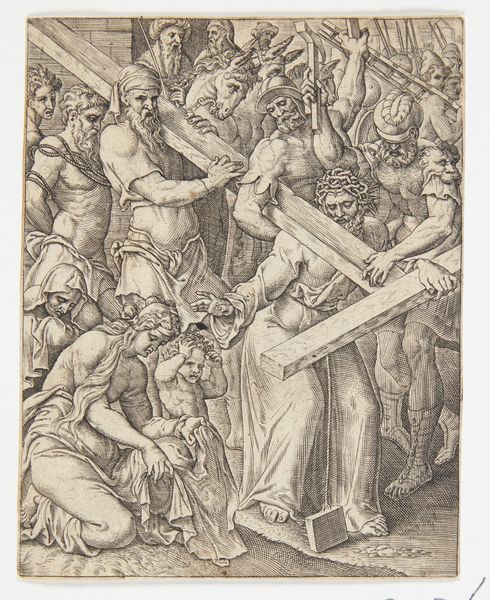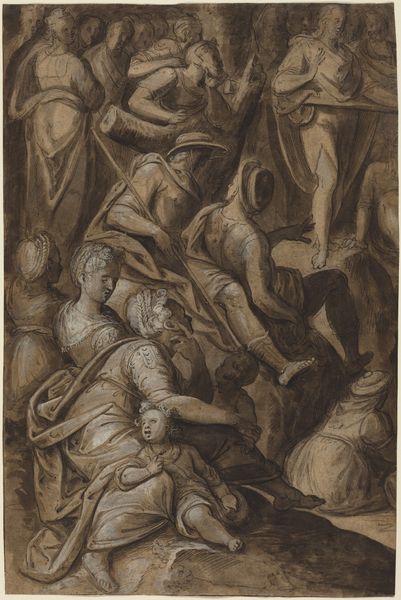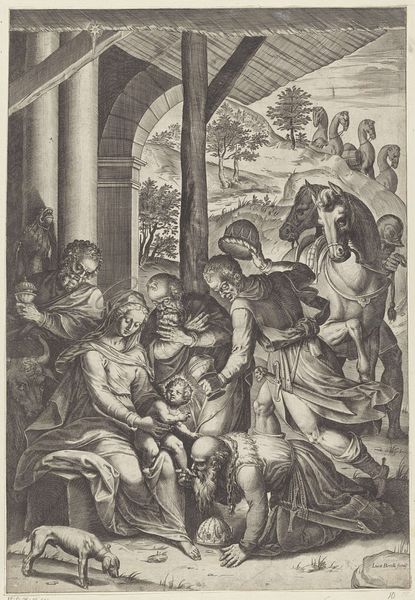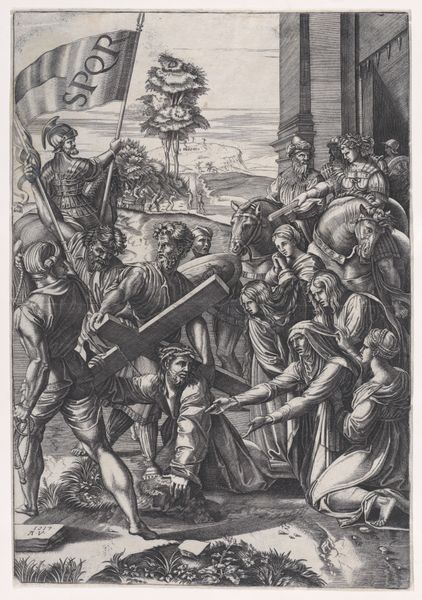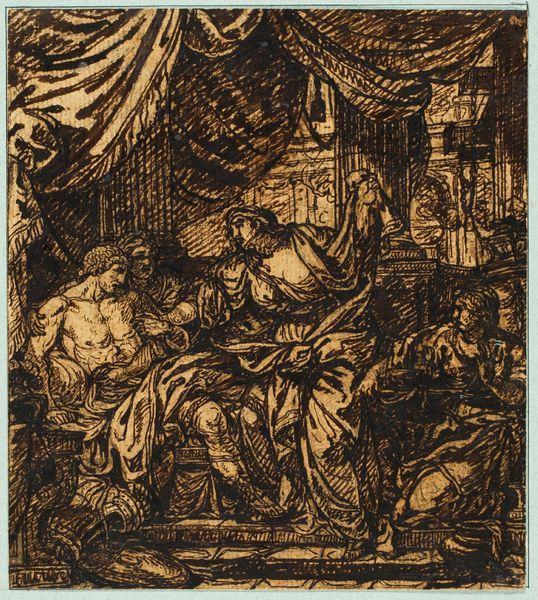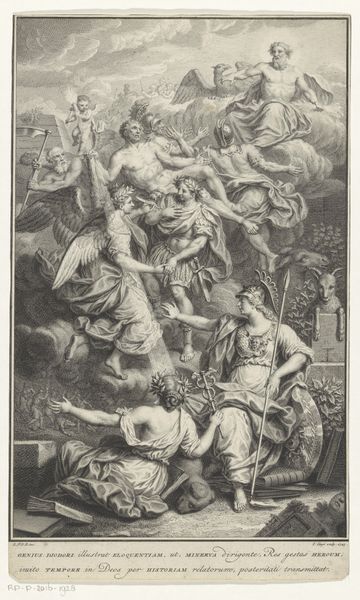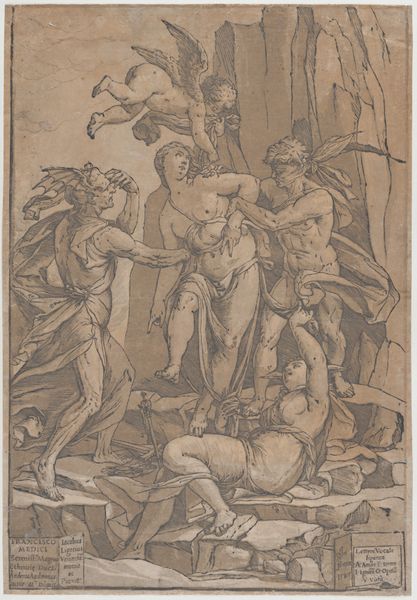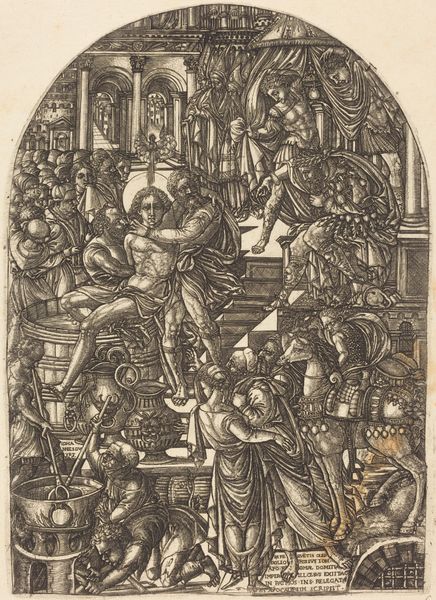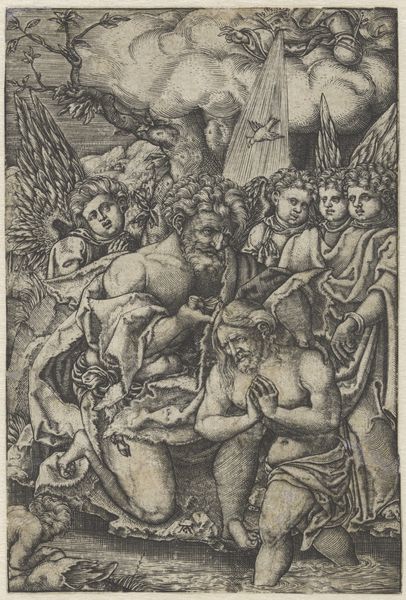
Hercules chasing Avarice from the temple of the Muses 1515 - 1525
0:00
0:00
drawing, print, engraving
#
drawing
# print
#
figuration
#
11_renaissance
#
line
#
history-painting
#
academic-art
#
italian-renaissance
#
engraving
Dimensions: Sheet: 11 5/8 × 8 15/16 in. (29.5 × 22.7 cm)
Copyright: Public Domain
Curator: Ugo da Carpi created this striking chiaroscuro woodcut, "Hercules chasing Avarice from the Temple of the Muses," sometime between 1515 and 1525. Editor: The drama is intense, isn’t it? Hercules dominating the scene with his raised club… the swirling lines and exaggerated musculature give it an almost frenetic energy. Curator: It certainly captures a pivotal moment. Hercules, the embodiment of virtue, is driving out Avarice, or greed, from the sacred space of the Muses. It's a Renaissance vision of moral cleansing and intellectual purity. Editor: Avarice seems to be symbolized by the downtrodden, gaunt figures being cast out. And I see a figure next to her that has coins dropping from them. Is it not curious that a Renaissance piece would personify such concepts when the rising merchant class began expanding European horizons? Curator: Da Carpi was likely working in a cultural climate increasingly anxious about the corrupting influence of wealth. His patron may also have shared the idea of aligning with these symbols of order. Hercules functions as a civic hero defending intellectual pursuits and traditional artistic inspiration from commercial intrusion. Editor: The symbolism is definitely multilayered. The Muses themselves look passive. Why would the protectors of art allow avarice into their temple to begin with? It challenges this ideal. Curator: It speaks to a concern shared throughout Renaissance society, which considered the humanist system susceptible to vices such as corruption. There were indeed those worried about art becoming mere commodity or luxury object. Editor: It leaves me wondering if Hercules can be entirely successful. Avarice doesn’t just vanish after being hit. What lingering influence might that leave on artistic inspiration? Curator: It certainly prompts reflections on enduring tensions between artistic creation and market forces, perhaps then and even now. Editor: Absolutely. The enduring allure of these iconic struggles is how their resonance continuously evolves.
Comments
No comments
Be the first to comment and join the conversation on the ultimate creative platform.
